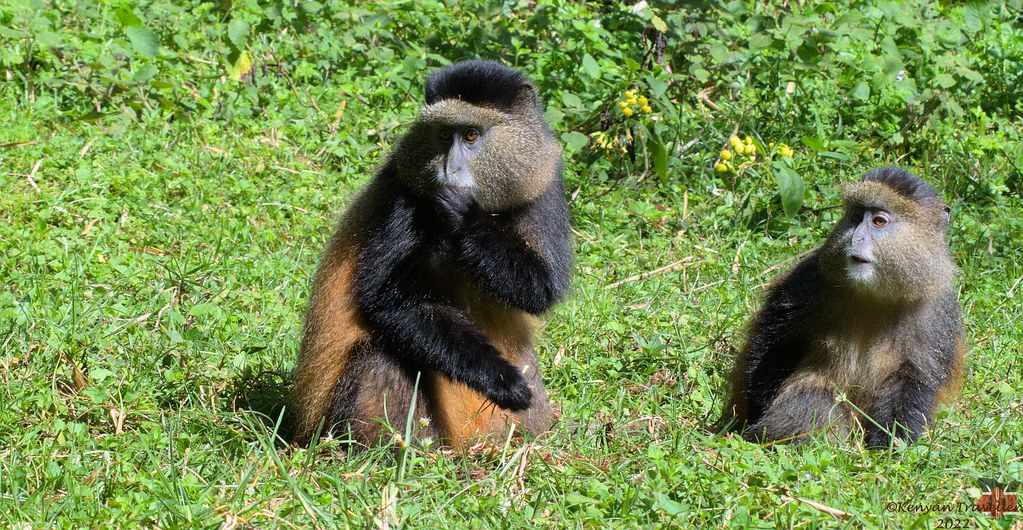Mgahinga National Park’s top ten birds
Top 10 birds in Mgahinga National Park: Situated on the border between Uganda and the Democratic Republic of Congo, Mgahinga gorilla national park is in South western Uganda. Comprising about 33.7 square kilometers, the Park, gazetted in 1991 is the smallest park in the nation. Originally, it was gazetted to save the mountain gorillas living in the forest, but Mgahinga guards much than just the threatened species.
The Batwa who today serve as tour guides for guests into the bush formerly called Mgahinga home. Golden monkeys also only live in the jungle in this nation. Its three of the five Virunga mountains, which surround Uganda, Rwanda, and the Democratic Republic of Congo, also provide great appeal.
Mgahinga has 76 species of mammals, including the gigantic forest fogs, bush pigs among others and between 179 and 184 species of birds. The top birds are the dusky turtle dove, cape robin chat, brown crowned tchagra, odd weaver, cinnamon bracken warbler, cinnamon chested bee eater, scarlet tufted malachite sunbird, lagden’s bushshrike, buff-spotted flufftail and the white starred robin.
Dusky dove of turtles
This dove is dark with a black spot on neck, as its name suggests. Seen properly, it has gray tail corners and crimson legs with feather edges. To feed their young ones after hatching, both male and female doves produce lumpy, pale yellow crop milk.
Cape Robin conversational style
The cape robin chat weights up to 28g and is 16–17 cm long. Its feature is grey upper portions with brownish olive secondary feathers. Orange covers the chin, throat, middle breast, and the outer tail feathers somewhat widely. The belly is pale grey and the middle tail feathers are rust. Just like other robin chats in a harsh but low warning call sounding as “wadeda,” the bird sings brilliantly.
Usually in couples, these birds nest in monogamous, territorial fashion. Typically, the nest is 0–2 feet above ground against a tree trunk. Usually, nesting falls in August then runs through January. Female deposit two to three eggs a day and spend 14 to 19 days incubating them.
Brown crested tchagra
Renowned for having a brown crown, the brown crowned tchagra, sometimes known as the tchagra australis, Its gray brown bushshrike has reddish wings, and its pretty strong pale eyebrow is another feature. Their wings produce a “prrp” sound when they skulk next the ground feasting on insects.
Warbler from Cinnamon Bracken
The bird is rufous, like to cinnamon. Its eye-line is pale, its tail long, and its throat white. Like other shy birds, the cinnamon bracken warbler enjoys seclusion in the undergrowth of deep scrub, heath or forest edge. It generates a sort of song akin to “tree-aat”.
Sunbird with scarlet tufts from malachite
Male tails of this big sunbird span up to 20 cm. From a far, their black heads with dark green upper bodies seem black. The tail and wings are black; underparts green; the female has brownish grey upperparts; dark brown tail and brownish black wings. Usually nesting in thick dead lobelia leaves, the birds mate late November to early January.
White performed as a star robin.
Its neck and front of the eyes show “white stars.” Growing just up to 15-16 cm in length and weighing 18-25g, the white starred robin is a rather little bird. Its head feathers are bluish-gray; the remainder of the wings is dark grey. The tail is black with yellow stripes; the legs are pink; the breasts are likewise yellow.
Emphasizing beetles, moths, and ants, the starred robin eats just fruits and insects. Among fruits are canthium, ficus and rhus. The females alone create from of dead leaves, rootlets, tendrils and moss lined with fine plant material during nesting. Usually built against a stump or rock, the nest takes seven days.
buff-spotted fluff tail
This particular fluff tail is quite shy and hardly seen unless very specifically sought for. The male’s back is black; the female is plain brown. Both the sexes have stripped tails. The undergrowth of the forest is where one mostly finds the buff-spotted fluff tail.
Lagden’s bushshrike with buff-spotted fluff tail
The heavy 23 cm long lagden’s bushshrike has a stocky blackbill. Its top section, including the wings and tail, is green with orange breasts and yellow underparts. One characterizes the lagden’s bushshrike song as “hoop hoop.” The bird inhabits the tropical forests’ under and middle story.
Curious weaver.
It has black head, dark olive back and yellow belly. On the breast, the man has a chestnut patch that stretches from the throat in women. Usually found in the undergrowth of the forest, the odd weaver moves in couples. One describes their cry as “chyet” sounds.
Cinnamon bee eater from the chest.
This bird has a golden chin and throat, bright green top parts, a cinnamon-colored breast deepening toward the belly, and tail. Growing to 22 cm in length, its weight falls between 17 and 38 grammes. Emphasizing bees and wasps, the bird consumes flying insects, carefully removes their venom by striking them hard before eating. Both sexes build their nests in burrows dug into the ground for twenty days. The female then deposits five eggs, one every day; incubation starts right away with the first egg placed. Both sexes perform incubation, lasting twenty days.
Black head waxbill, streaky seed eater, Chubb’s cisticola, n Rena trogon, archer’s robin chat, and many more other birds call Mgahinga home. From 5 to 6pm, birding in Mgahinga is free of cost; only book by 10 a.m. Though the activity takes place all year round, March–May and September to November during the wet and breeding season are the greatest months.

